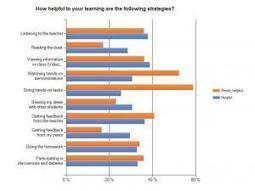Who is the Expert Learner?
Expert learners take responsibility for their learning. They view learning as something they do for themselves, not something that is done to them or for them. [Source: The Expert Learner]
The Universal Design for Learning (UDL) perspective for the Expert Learner is for a learner to be:
> Resourceful and knowledgeable
> Strategic and goal-directed
> Purposeful and motivated
Then how can you develop expert learners with voice and choice?
The Three Stages of Personalized Learning Environments provide the process to encourage learner voice. This process can guide the design of personalized learning environments that meets the needs of all learners. Stage One is teacher-centered and encourages learner voice and some choice. Learner voice is a critical first step. There are ways to do this and this table here describes how the teacher and learner roles change in this stage.
When learners have the opportunities to say what they think and be heard by their peers and others, they feel their opinions and perspectives are valued and appreciated. Think about yourself as a learner and what it might feels like if you have a voice in how you learn and even influence decisions about teaching and learning.



 Your new post is loading...
Your new post is loading...








